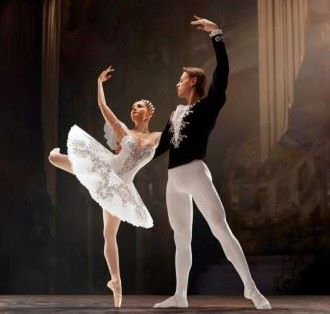
May is Mental Health Awareness Month and while it is always an important topic, it is even more imperative that we discuss it amid this COVID19 pandemic. According to a study published in 2005 “dancers had a significantly higher distribution of PTSD (20.2%) compared to the normal population (7.8%).” While there may be many variables, why is this so? Shouldn’t dancers, who reside, work, and exist in the body, have a greater awareness of their physical and emotional health? If dancers are in good shape and eat well, wouldn’t their mental health be healthy as well? The answer, plain and simple, is no!
It is my belief as a dance/movement therapist that all experiences are housed in the body. The body experiences everything the mind does and vice versa. We may feel we have verbally processed everything about a situation. We may even talk to a professional about it until there is nothing left to say. That is precisely when the body needs a chance to speak. The body holds answers to the questions the mind doesn’t even know to ask. We must give the body the opportunity to speak and be heard.
So if the body houses all experiences it makes sense that moving in a certain way can bring those experiences to the surface. And unless there is an appropriate outlet for the emotions that come with that experience, dancers can find themselves overwhelmed, unable to cope, and perhaps even using negative coping strategies to manage. Let me give you an example:
Sarah was the principal at in a prestigious ballet company. She never told anyone, but she was sexually abused as a child and had spent most of her adult life in a series of abusive relationships. Dance was her escape and always seen as a safe place. One day while working with a new dance partner, Sarah was embraced forcefully from behind. Although part of the choreography, Sarah’s nervous system didn’t know the difference between the present and past experience. This caused her to flashback to a personal experience that caused her anxiety and panic. She ran out of rehearsal in tears.
Dance culture itself has been known to cause trauma. The pressure to look a certain way, perform a certain way, or even keep up with the ever-changing demands of the dance community can be overwhelming for even the most seasoned dancer.
Imagine a young dancer born with the passion for dance, but not the body type. She is graceful, poised, and expressive with her body and moves effortlessly across the floor. She has always been at the top of her class and a role model for other dancers. One day she is pulled aside by her teacher, who not only states that she is “big” for a dancer, but that she will not be considered for solos unless she “gets in shape.” She is humiliated in class when the teacher pinches parts of her body and points out how different she looks from the rest of her peers, calling her the “fat” one. The young dancer starts to hate her body and herself. Concerned for her future as a dancer, she starts to constrict her eating. At 5’7” and 110 lbs, she is commended for losing weight and looking “so thin.” She is rewarded with a solo, except her thin frame and lack of nutrition cannot support the grueling routine and rehearsal schedule. She pushes herself harder to keep up with her competition; popping pain killers and consuming energy drinks. The feeling that at any moment she could be replaced weighs on her like a ton of bricks. She suffers from joint pain, muscle fatigue, and exhaustion, but she continues to push through it all until one day she collapses on the dance floor.
These two examples are a just a few of the reasons that dancers may be more susceptible to trauma. You see the body and mind are connected and as much as we try to separate them there is an undeniable relationship. Dancers, athletes, anyone that uses the body for their livelihood must consider the implications it has on mental health. While all dance is movement, not all movement is dance. It is that movement that we need to focus on in order to come back to the self, regulate emotions, and re-pattern the brain.
So what can be done to create more awareness and empower dancers to get the emotional support they need?
- Find ways to relate to movement outside of the dance studio. Noticing how we move, where we hold our emotions, and how we communicate non-verbally are great places to start.
- Take time to move for you. As dancers, we spend a lot of time taking on and performing other people’s choreography. Tapping into your own movement affinities, patterns, and habits can help you establish a strong connection to yourself; your likes and dislikes, your beliefs, and even your identity.
- Don’t be afraid to get help. It is a sign of strength, not weakness, to ask for help. After all, you didn’t become the dancer you are without great teachers along the way. We all need help to be the best version of ourselves and therapists can help illuminate the best ways to do that.
About Erica Hornthal
Erica Hornthal is a licensed clinical professional counselor and board-certified dance/movement therapist. Erica uses a person-centered approach to work with individuals of all ages and abilities. Her interests are working with movement and cognitive disorders as well as trauma and anxiety. Erica works with all of her clients to enhance the mind-body connection so that each individual can live their greatest quality of life. Erica’s mixture of talk therapy and body-centered interventions is what has earned her the nickname “The Therapist That Moves You.”
Instagram: @chicagodancetherapy
Facebook: https://www.facebook.com/jennifermilnerbodiesinmotion
Website: https://www.chicagodancetherapy.com/
Email: erica@chicagodancetherapy.com
Find her on Doctors For Dancers: https://doctorsfordancers.com/625/chicagodancetherapy/
